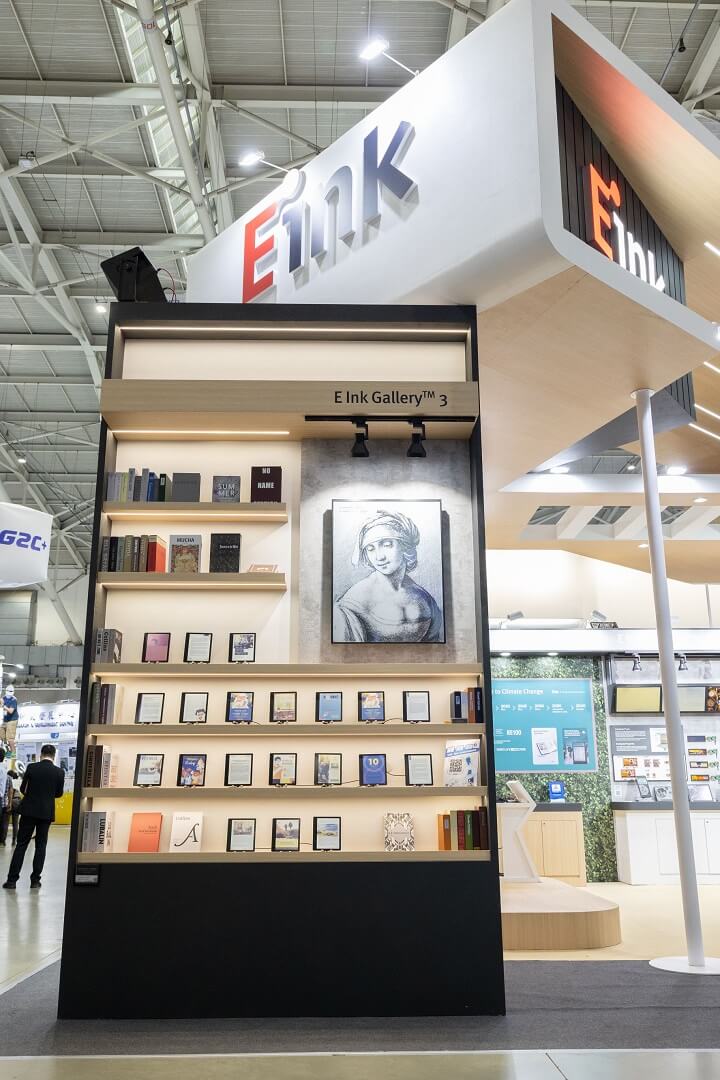TECHNOLOGY DESCRIPTION
Introduction
Learn more about E Ink and how our technology works.
E Ink is the inventor of several types of electrophoretic ink, often called electronic ink. When laminated to a plastic film, and then adhered to electronics, it creates an Electronic Paper Display (EPD), also known as an ePaper Display. Although futuristic-sounding, electronic ink is actually a straightforward fusion of chemistry, physics and electronics. It's so much like paper, it utilizes the same ink used in the printing industry today.
One Particle Ink System

E Ink JustTint™ is a variable transmissive film, which, when adhered to glass or plastic, allows for control of the light through the surface. JustTint utilizes a one-particle ink system, but drives the ink in new ways versus other ink systems. In JustTint, the black particles move to the side when a charge is applied to allow a transparent area of the capsule.
Two Particle Ink System - E Ink Carta™ & E Ink JustWrite™

E Ink’s two particle electronic ink system is made up of millions of tiny microcapsules, each about the diameter of a human hair. Each microcapsule contains negatively charged white particles and positively charged black particles suspended in a clear fluid. When a positive or negative electric field is applied, corresponding particles move to the top of the microcapsule where they become visible to the viewer. This makes the surface appear white or black at that spot.
E Ink Carta™ films utilize this two particle system.

E Ink JustWrite™ is another of E Ink's film utilizing a two particle system. This film works differently than our Carta films, and is designed to deliver a natural writing experience without the use of a TFT backplane or complex electronics. In JustWrite, a magnetic pen is the "driver" to move the ink; to reset the display back to clear, a small electrical charge is applied. JustWrite retains the same image stability of all of our ink platforms and power is only utilized to reset the image.
Three Particle Ink System – E Ink Spectra™ 3000

E Ink Spectra™ 3000 utilizes a three particle ink system in a Microcup® structure. This ink was engineered specifically for Electronic Shelf Labels (ESL) and is offered in black, white and red, and black, white and yellow. This ink system works similarly to the dual particle system, in that a charge is applied to the particles, and to a top and bottom electrode to facilitate movement. However, instead of the use of microcapsules, this system utilizes Microcups®, which are filled with the liquid and sealed.
Four Particle Ink System – E Ink Spectra™ 3100

E Ink Spectra™ 3100 is E Ink’s next generation Spectra product. Spectra 3100 is a four particle ink system which incorporates retailer’s requests for additional color functionality, by utilizing black, white, red and yellow particles to offer vibrant color for rich content. Spectra 3100 has an improved update time, and an expanded temperature range for red and yellow states to satisfy retailers’ needs to operate ESL tags in various environments within their stores. In addition, Spectra 3100 is offered in panels with an updated all-in-one driver IC that supports premium ESLs with higher resolution across various sizes.
Four Particle Ink System - E Ink Gallery™ & E Ink Prism™

Based on the Advanced Color ePaper (E Ink ACeP™) Platform
In 2016 E Ink showcased a multi-particle ink system, Advanced Color ePaper (E Ink ACeP™). The ACeP™ ink platform achieves a full color gamut, including all eight primary colors, by using colored ink particles. The ink can be incorporated into either microcapsule or Microcup® structures. Color is achieved by having all the colored particles in every pixel, removing the need for a color filter array (CFA). ACeP™ maintains the ultra-low power and paper-like readability under all lighting conditions of regular E Ink ePaper.
This system is found in E Ink's Gallery and Prism product lines.
What is Digital Paper (ePaper)?

Learn More.
FAQ
Learn more about E Ink and how our technology works.
-
What is E Ink?
E Ink is the creator of electronic ink — the optical component of a film used in Electronic Paper Displays. Although futuristic-sounding, electronic ink is actually a straightforward fusion of existing knowledge of chemistry, physics and electronics to create this new material. It's so much like paper, it actually utilizes the same pigments used in the printing industry today.
While E Ink has several types of electronic ink, we became best known for our microcapsule technology. In this system, the electronic ink is made up of millions of tiny microcapsules, about the diameter of a human hair. Each microcapsule contains positively charged white particles and negatively charged black particles suspended in a clear fluid. When a positive or negative electric field is applied, corresponding particles move to the top of the microcapsule where they become visible to the user. This makes the surface appear white or black at that spot. -
Does E Ink have a color product or is it only monochrome?
E Ink has several color products available.
E Ink also offers a three to five color product called E Ink Spectra, which is optimized for electronic shelf labels and point-of-purchase sale applications.
In addition, E Ink offers a one-color product called E Ink Prism, which is optimized for the Architecture market.
For full color, we have E Ink Gallery; and E Ink Kaleido in 4096 colors. -
How long does it take to update an image on an E Ink Matrix display?
An E Ink display module supports numerous modes for updating the display. Different modes exist to support the different update requirements. Update times can be as short as 120 ms. for the entire display. However, because E Ink screens are bi-stable, only the regions of the screen that are changing require updating. Any pixels that are not changing do not require updating.
-
Can an E Ink Matrix display support animation or video rates?
Using the faster update modes, E Ink screens can support animation quality video rates. A number of examples are available from customers that show examples of E Ink screens showing video. However, constant updates reduce the power efficiency of our ink systems. Current production modules do not support video rate updates.





